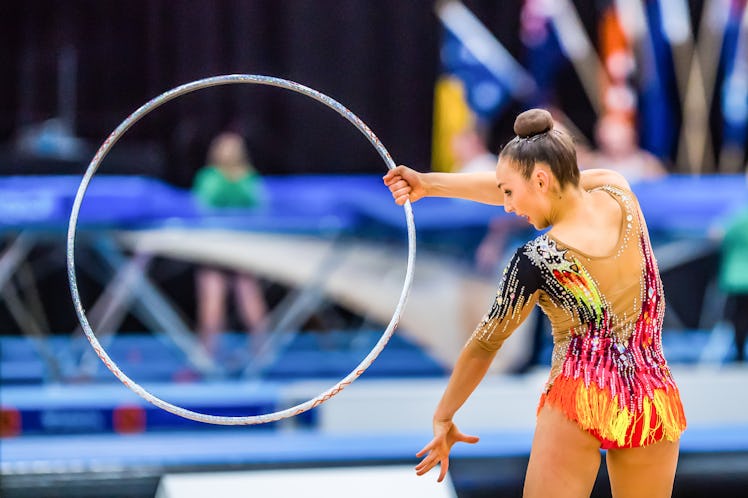
There Are Some Big Differences Between Rhythmic And Artistic Gymnastics
Because no, they’re not the same.
The mid-air flips, the carefully balanced spins, the sky-high jumps — with the Summer Olympic Games finally here, almost everyone’s focus is zeroing in on gymnastics as one of the most popular events. But many people don’t seem to realize there are actually two types of gymnastics disciplines taking place during the Summer Olympic Games: rhythmic gymnastics and artistic gymnastics. So, what exactly are these two disciplines, and what makes them so different? While their names may sound similar, they’re actually quite unique from one another.
In the United States, when anyone talks about “gymnastics,” the images that usually come to mind are those of balance beams, uneven bars, vault jumps, and carefully choreographed tumbling routines. That’s all associated with artistic gymnastics, where athletes are scored based on the technical difficulty of their movements, their execution, and their skills on each apparatus. Although gymnastics has existed for more than 2,000 years, artistic gymnastics as we know it today has only existed since the early 1800s “to distinguish free-flowing styles from techniques used in military training,” per the International Olympic Committee (IOC).
Rhythmic gymnastics on the other hand, is a sport rooted in classical ballet, German apparatus work, and Swedish exercise, per The New York Times, and it wasn’t introduced to the Olympics until the 1984 games in Los Angeles. At its heart, rhythmic gymnastics is about skill, flexibility, and musicality. Athletes are graded on difficulty and execution, which includes how well they perform their leaps, jumps, and how skillfully they use their apparatus equipment. They can also receive point deductions for a long list of mishaps, like landing too heavily on their feet or not keeping in time with the music. When gymnasts execute their routines, their performances are lithe and dance-like as they spin and contort their bodies into impossibly graceful silhouettes, all while skillfully balancing a hoop or juggling batons. Does that sound wild? Don’t worry — it’s even more wild to watch. For rhythmic gymnasts, literally folding yourself in half is just part of everyday life.
Athletes in rhythmic gymnastics also use apparatus to aid or enhance their routines, although they’re really different from the equipment used in artistic gymnastics. The four main tools used in rhythmic gymnastics include the ball, the hoops, the clubs, and the ribbon. Gymnasts must perform choreographed floor routines using each apparatus in different ways, as creatively as they can.
Another big difference between the two disciplines is who can compete at the Olympic level. Both men and women are allowed to compete in artistic gymnastics at the Olympic level, though they use different sets of apparatus (think: pommel horse, still rings, parallel bars). However, rhythmic gymnastics is only one of two sports that doesn’t allow men to compete at the Olympic level. (The other is synchronized swimming, just in case you’re curious.) According to an August 2012 report from the Times, the gender gap is largely due to a lack of exposure and marketing that may help draw more men to professionally compete in the sport.
While the differences in artistic and rhythmic gymnastics are vast, there’s one thing both disciplines have in common: they make for some pretty amazing performances by incredibly bad*ss athletes.